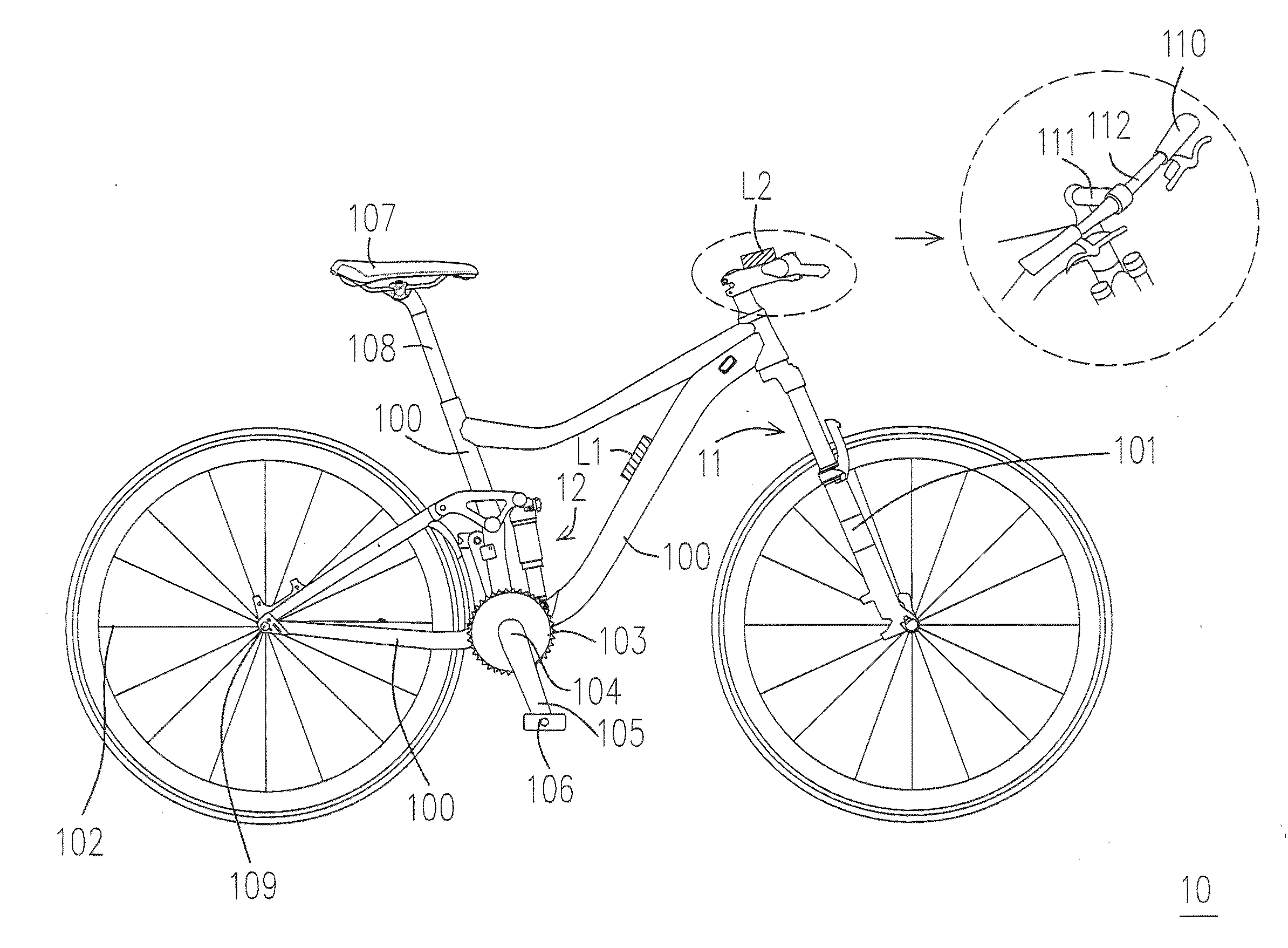Automatic shock absorber system for bicycle
a bicycle and automatic control technology, applied in the field of bicycle suspension systems, can solve the problems of inability to make timely adjustment of front shock absorber, inability to coordinate front and rear shock absorber, and inability to ride a bicycle in the mountain as stable as driving a four-wheel drive vehicle, so as to improve pedaling efficiency and improve riding safety
- Summary
- Abstract
- Description
- Claims
- Application Information
AI Technical Summary
Benefits of technology
Problems solved by technology
Method used
Image
Examples
first embodiment
[0067]FIG. 2 is a block diagram illustrating an automatic control shock absorber system for a bicycle according to the first embodiment. In this embodiment, an automatic control shock absorber system 200 for a bicycle includes a pedaling cadence sensor 210, a signal receiver 220, a controller 230, and a damping adjuster 240.
[0068]The pedaling cadence sensor 210 is configured to detect a pedaling cadence of the bicycle 10 and output a pedaling signal. The pedaling cadence sensor 210 may be disposed at one of the chain ring 103, the crank spindle 104, the crank arm 105, the pedal 106, and the frame 100, etc., of the bicycle 10. In addition, the pedaling cadence sensor 210 may also be disposed at a leg, such as both legs (e.g. inner sides of thighs) of the rider, or on a shoe of the rider.
[0069]The signal receiver 220 is coupled to the pedaling cadence sensor 210 and the controller 230 to receive and transmit the pedaling signal to the controller 230. Here, the signal receiver 220 may ...
second embodiment
[0079]FIGS. 4A and 4B are block diagrams illustrating an automatic control shock absorber system for a bicycle according to the second embodiment. In FIG. 4A, an automatic control shock absorber system 400 for a bicycle includes a posture sensor 410, the signal receiver 220, the controller 230, and the damping adjuster 240. Here, components having the same functions as those described in the first embodiment are referred to with the same reference symbols, and description relevant to the components is omitted.
[0080]The posture sensor 410 is configured to detect whether the rider adopts a standing posture or a sitting posture when riding the bicycle 10, and output a posture signal. The signal receiver 220 is coupled to the posture sensor 410 to receive the posture signal. The controller 230 is coupled to the signal receiver 220 and output the level control signal to the damping adjuster 240, such that the damping adjuster 240 adjusts the level of the damping force according to the le...
third embodiment
[0091]FIG. 6 is a block diagram illustrating an automatic control shock absorber system for a bicycle according to the third embodiment. An automatic control shock absorber system for a bicycle of the embodiment includes the pedaling cadence sensor and a slope sensor. Referring to FIG. 6, an automatic control shock absorber system 600 for a bicycle includes the pedaling cadence sensor 210, a slope sensor 610, the signal receiver 220, the controller 230, and the damping adjuster 240. Here, components having the same functions as those described in the first embodiment are referred to with the same reference symbols, and description relevant to the components is omitted.
[0092]The slope sensor 610 is configured to detect a slope of a location of the bicycle 10 and output a slope signal, such that the slope signal is transmitted to the controller 230 through the signal receiver 220. Here, the controller 230 determines a relational curve of damping according to the slope signal, and outp...
PUM
 Login to View More
Login to View More Abstract
Description
Claims
Application Information
 Login to View More
Login to View More - R&D
- Intellectual Property
- Life Sciences
- Materials
- Tech Scout
- Unparalleled Data Quality
- Higher Quality Content
- 60% Fewer Hallucinations
Browse by: Latest US Patents, China's latest patents, Technical Efficacy Thesaurus, Application Domain, Technology Topic, Popular Technical Reports.
© 2025 PatSnap. All rights reserved.Legal|Privacy policy|Modern Slavery Act Transparency Statement|Sitemap|About US| Contact US: help@patsnap.com



